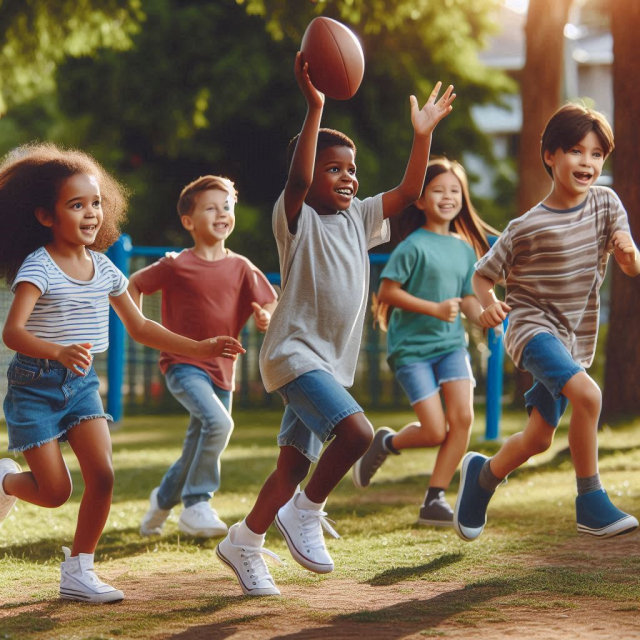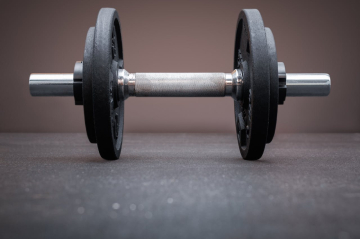Coordination is an essential motor skill that allows our body to perform smooth and precise movements. It is the ability of our muscles, joints, and nervous system to work together harmoniously to execute a variety of actions, from the simplest to the most complex. Improving coordination is not only crucial for athletes and dancers, but is also important for anyone who wants to improve their physical performance, reduce the risk of injury, and maintain a good quality of life. In this article, we will explore what coordination is, why it is important, and how we can improve it through specific exercises and practices.
What is Coordination?
Coordination refers to the ability of our muscles and nervous system to work together to perform precise, controlled movements. It involves the interaction between different parts of the body to perform a specific task, such as throwing a ball, dancing, or simply walking without tripping. There are several types of coordination, including:
- Hand-eye coordination: The ability of our eyes and hands to work together to perform tasks such as catching a ball or writing.
- General coordination: The ability of the entire body to work efficiently and in a balanced manner, such as in activities that require running, jumping, or changing direction quickly.
- Bilateral coordination: The ability to use both sides of the body in a synchronized manner, such as in activities that require the use of both hands or feet simultaneously.
- Intramuscular coordination: The ability to activate the right muscles at the right time to perform precise movements.
Importance of Coordination.
Coordination is essential for carrying out daily and sporting activities. Good coordination improves the effectiveness of movements, reduces the risk of injury, and allows physical tasks to be performed with greater ease and precision. Furthermore, coordination is also linked to cognitive development, as many activities that improve coordination also stimulate the brain.
In sports, excellent coordination can be the difference between good and great performance. In everyday life, efficient coordination allows tasks to be performed with less effort and greater safety, which is especially important as we age.
Strategies to Improve Coordination.
Improving coordination is possible for people of all ages and skill levels. Below are some effective strategies for developing and improving coordination.
Specific Coordination Exercises.
Exercises specifically designed to improve coordination are a great way to develop this skill. Here are some examples:
- Side jumps: This exercise involves jumping from side to side, which helps improve overall coordination and balance. You can use a rope or a line on the ground as a reference to jump from one side to the other.
- Agility Ladder Drills: Agility ladders are popular tools in sports training to improve coordination, speed, and agility. Performing different step patterns through the ladder requires precision and movement control.
- Throwing and catching a ball: This simple drill can be done alone or with a partner. Throwing and catching a ball improves hand-eye coordination and is especially useful for sports that require precision.
- Balancing on one leg: Balancing on one leg improves coordination and body control. You can increase the difficulty by closing your eyes or using an unstable surface, such as a balance pad.
- Crossed Movement Patterns: Exercises that require crossed movements, such as touching the right elbow to the left knee and vice versa, are great for improving bilateral coordination and the connection between both hemispheres of the brain.
Games and Sports that Improve Coordination.
Participating in games and sports that require precise movements and coordination is a fun and effective way to improve this skill. Some sports and activities that are particularly good for developing coordination include:
- Tennis and Ping-Pong: Both sports require excellent hand-eye coordination as they involve hitting a moving ball with a racket.
- Basketball: In addition to improving hand-eye coordination, basketball also improves overall coordination and agility through quick movements and changes of direction.
- Swimming: Swimming requires full-body coordination, as breathing must be synchronized with arm and leg movements to swim efficiently.
- Dance and Dancing: Different dance styles, such as ballet, salsa or hip-hop, require a great deal of coordination, body control and rhythm. Dancing is a great way to improve overall and bilateral coordination.
- Precision games: Games like billiards, darts or archery are also great for developing coordination, as they require precision and control of movement.
Balance and Proprioception Exercises.
Balance and proprioception are key components of coordination. Proprioception refers to our body's ability to sense its position in space and is crucial for performing coordinated movements. Improving balance and proprioception can have a significant impact on overall coordination.
- Unstable Surface Training: Using unstable surfaces such as a balance board, balance pad, or stability ball can challenge balance and improve proprioception. These exercises activate stabilizing muscles and improve the ability to control the body.
- Single-leg exercises: As mentioned above, balancing on one leg is a great exercise to improve coordination. You can increase the difficulty by performing additional movements while balancing, such as turning your head or moving your arms.
- Yoga and Pilates: These practices focus on body control, core strength, and balance. Yoga poses, in particular, challenge balance and coordination, making them a great choice for improving these skills.
Development of Cognitive Coordination.
Coordination is not only physical, but also cognitive. Improving cognitive coordination involves training the brain to process and respond to stimuli quickly and efficiently. Some ways to improve cognitive coordination include:
- Memory and concentration games: Games such as chess, puzzles and memory games help improve the brain's ability to coordinate different tasks and respond quickly to stimuli.
- Learning new movements: Learning new movements or motor skills, such as playing a musical instrument, improves cognitive coordination by challenging the brain to adapt to new situations and movement patterns.
- Quick reaction drills: Games and exercises that require quick response to stimuli, such as reaction games or team sports, help improve brain processing speed and coordination.
Maintain good general physical condition.
Good overall physical fitness is essential for optimal coordination. This includes maintaining a healthy weight, strengthening muscles, and maintaining flexibility. Strength training is particularly important, as strong muscles can better control movements and maintain body stability.
In addition, flexibility improves range of motion and allows joints and muscles to work together efficiently. Regular stretching and practices such as yoga or Pilates can improve flexibility and, in turn, coordination.
Coordination is a fundamental skill that impacts virtually every aspect of our daily lives and physical activities. Whether we are playing sports, dancing, or just walking, good coordination allows us to perform movements with precision, avoid injuries, and enjoy an active and healthy life.
Improving coordination is an ongoing process that requires dedication and practice. Through specific exercises, participation in sports, balance training, and the development of cognitive coordination, we can significantly improve our ability to move efficiently and effectively. In the end, better coordination not only improves our physical performance, but also contributes to a better overall quality of life.






